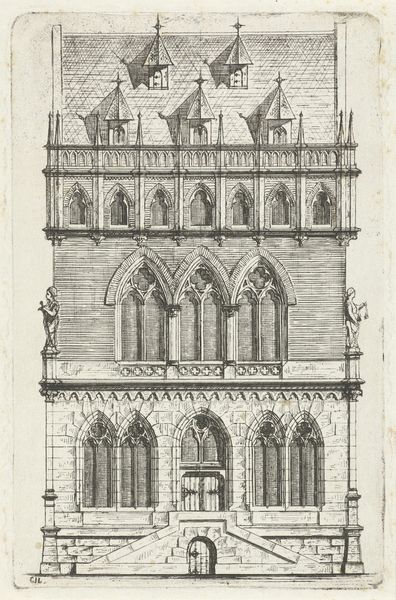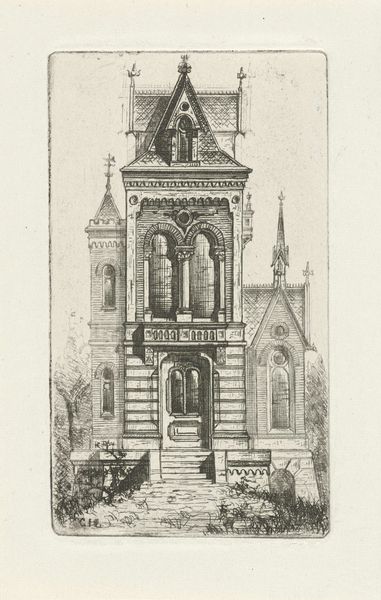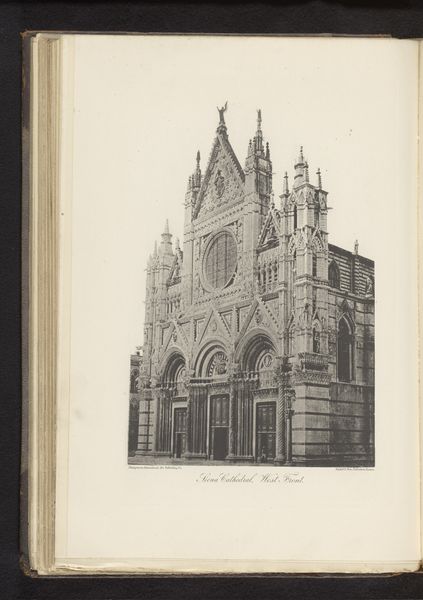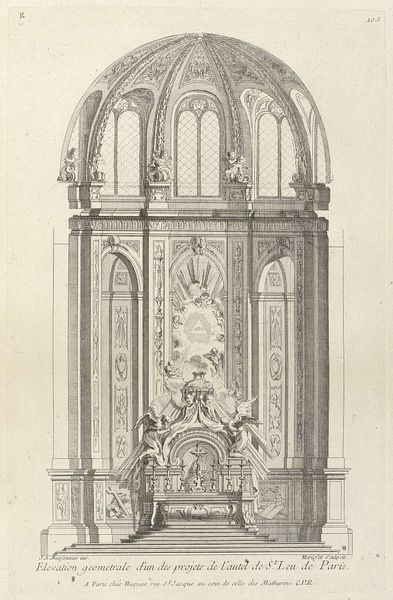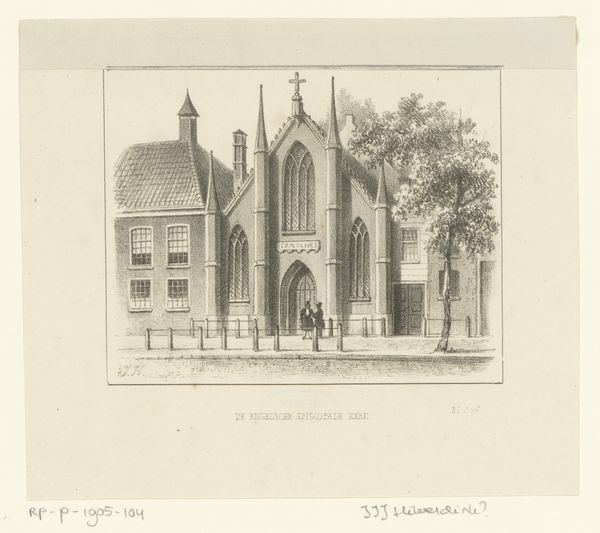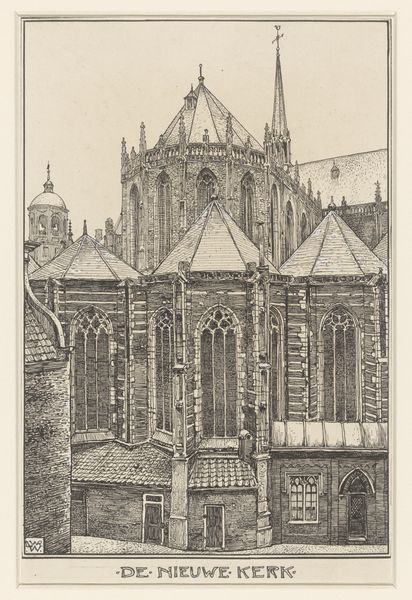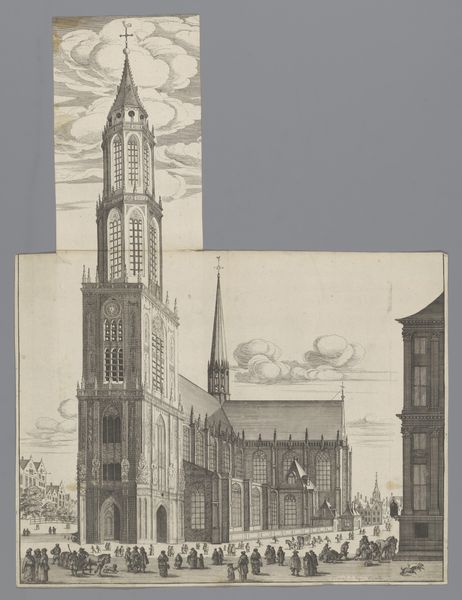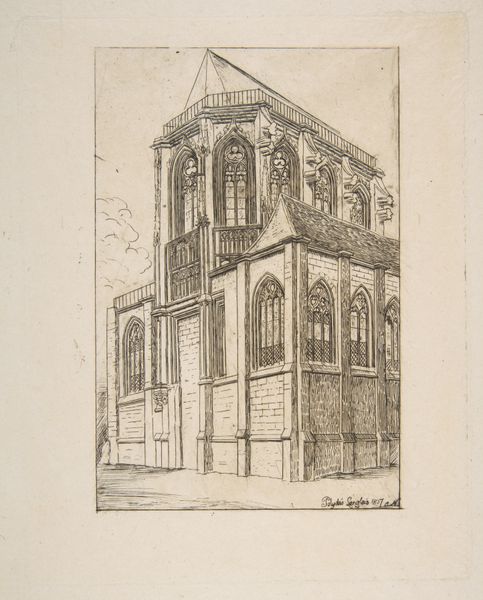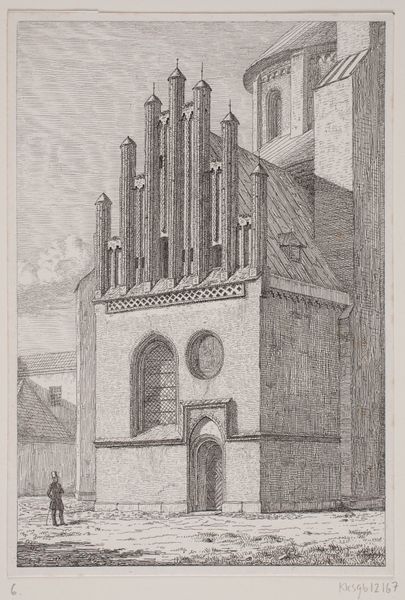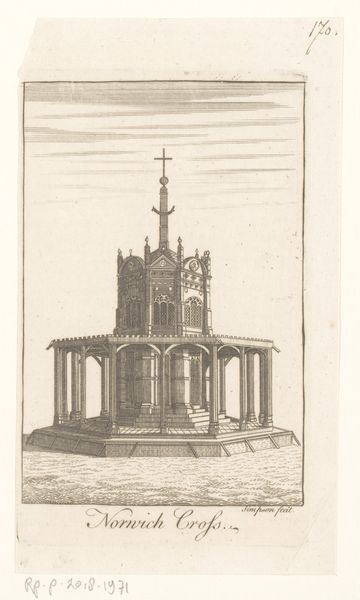
Dimensions: height 71 mm, width 109 mm
Copyright: Rijks Museum: Open Domain
Editor: Here we have "Gothic Facade with Seven Pinnacles" by Cornelis Johan Laarman, created between 1854 and 1889, rendered as an etching. I’m struck by the architectural detail. What's particularly interesting is how such an elaborate structure is conveyed with such delicate lines. What can you tell me about this piece? Curator: Well, first, we have to consider that Gothic architecture experienced a revival during the 19th century. Prints like this helped circulate architectural ideas and aesthetics. But ask yourself, is this a completely objective record? Editor: I guess not. It feels like Laarman isn't just documenting a building. It's like he's also expressing an admiration for it, romanticizing the Gothic style. Curator: Precisely! These kinds of images weren’t just documentation; they were instrumental in shaping public taste. Prints such as this helped make Gothic architecture desirable, turning it into a symbol of national pride in some countries. We might also consider where this image would have been displayed and by whom. How does this etching fit into a larger story about 19th-century European identity, for instance? Editor: So, this image isn't just about the building itself, but about how people *perceived* and *valued* architecture and its role in society at the time? Curator: Exactly. The availability of these images democratized architectural knowledge while also shaping it, framing perceptions within a specific cultural context. It speaks to the power of print to influence our understanding and appreciation of art and architecture, beyond its mere aesthetic appeal. Editor: I never thought of it that way – seeing how an image itself can be a political or cultural statement. I will be thinking about images as interventions rather than mirrors going forward.
Comments
No comments
Be the first to comment and join the conversation on the ultimate creative platform.
